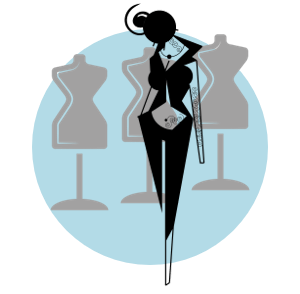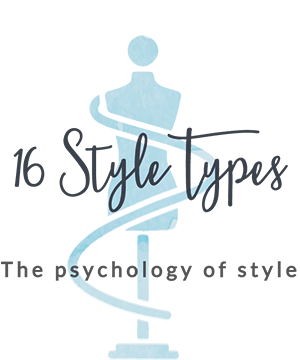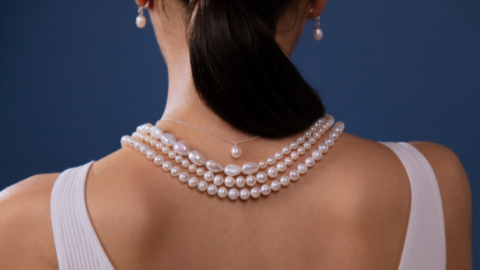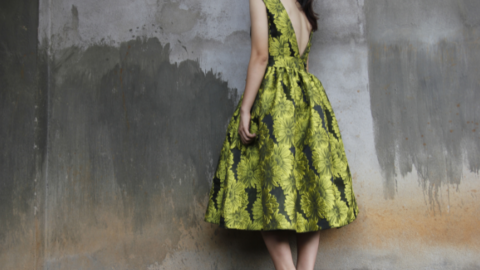
Judging and Perceiving: Shopping Example
A first key insight to those who are new to this concept can be: “Wow – this is so helpful to know there are two functions I can draw on – taking in information is actually separate from deciding things!”. This can be super helpful in a style context, as it means you aren’t always meshing processes which can serve you better if they are separated.
So whilst it is true that we don’t engage in Perceiving (taking in and retrieving data) and Judging (assessing and deciding) at the same, we can move between Judging and Perceiving quickly, and sometimes constantly. Let’s see how this might play out in a shopping experience:
- You decide to go shopping, and where you’re going to go, and who with – Judging
- You arrive at the mall, look around and take in what you see – the layout, the lighting, the music playing, the general vibe, all that might be possible – Perceiving
- You choose a store to go into as they are playing music you like – Judging
- You look around, walk around, absorbing all that you see – Perceiving
- You decide to try on 6 garments – Judging
- You notice how they fit and look, how you feel, what they remind you of, what ideas they’re popping, if they jive with your inner vision (whatever it is for you) – Perceiving
- You compare the items to your color palette, ask yourself what else it goes with, how you can wear it/where you’d wear it, how it fits in your closet, if you like it, does it gel with values (whatever it is for you) – Judging
- You decide to buy 2 items, and put the remaining 4 items back – Judging
- You head the Mall Directory to see what else is there – Perceiving
This example could go on for pages, but it gives you a flavor of how your Judging and Perceiving functions can interplay with one another.

Perceiving and Judging Functions: Analogy
How Extraverts and Introverts ‘employ’ their Leading vs Supporting Judging and Perceiving functions differs markedly. The analogy that illustrates this difference is of a Boss and her Assistant. Let’s make this a style analogy and make the Boss a Designer.
The Designer and her Assistant work as a great team – they need one another for balance. But one is definitely leading the way, the other is supporting. If the Designer is a Perceiving dominant Type, her Assistant is a Judging dominant Type; if the Designer is a Judging dominant Type, her Assistant is a Perceiving dominant type.
Here’s how this shows up for Extraverts and Introverts, whose “boss” differs:
Extraverts: The Boss Designer is outside the studio, walking around, talking to her team members – the cutters, the pattern makers, the hand sewers, the assistants – and to clients, suppliers, and so on. She’s drawing on the energy of others and the activity around her. She’s a visible presence, glad-handing, available and open. Her Assistant is inside the studio, providing back-up and support from within those confines, bringing things to the Designer’s attention as she’s walking around and talking to others in the studio.
Introverts: The Boss Designer is inside the studio, doing her thing on her own terms and timeframe, fully absorbed in her space which suits her perfectly. She’s drawing on the energy from within – inside is where the action is happening for her. She’s not always available to others, she calls in trusted people when required. Her Assistant is outside the studio, talking to the pattern makers and sewers, providing back-up and support and bringing things back to the Designer inside the studio.

Perceiving and Judging Functions: Examples
ENTJ: Extraverted Thinking (Judging) Dominant, with Introverted iNtuition (Perceiving), Supporting.
The Designer Extraverted Thinking (Te) is outside the studio, walking around, talking to her team members – the cutters, the pattern makers, the hand sewers, the assistants – and to clients, suppliers, and so on. She’s drawing on the energy of others and the activity around her. She’s a visible presence, glad-handing, available and open. Te is making decisions efficiently and quickly in the moment, based on logical criteria (Judging).
Her Assistant Introverted iNtuition (Ni) is inside the studio, providing back-up and support from within those confines, bringing it to the Designer’s attention as she’s walking around the studio. Ni “just knows” things and holds this vision (Perceiving).
ISFJ: Introverted Sensing (Perceiving) Dominant, with Extraverted Feeling (Judging) Supporting.
The Designer Introverted Sensing (Si) is inside the studio, doing her thing on her own terms and timeframe, fully absorbed in her space which suits her perfectly. She’s drawing on the energy from within – inside is where the action is happening for her. She’s not always available to others, she calls in trusted people when required. Si is gathering important information and organizing and ordering it perfectly (Perceiving).
Her Assistant Extraverted Feeling (Fe) is outside the studio, talking to the pattern makers and sewers, providing back-up and support and bringing it back to the Designer inside the studio. Fe makes decisions based on harmony and personal likes and dislikes (Judging).

It’s time to Explore Your Functions
Now turn to page 76 of your Module 10 PDF and do the first Perceiving and Judging Exploration – who is your boss and who is your assistant? How do they work together for you?



